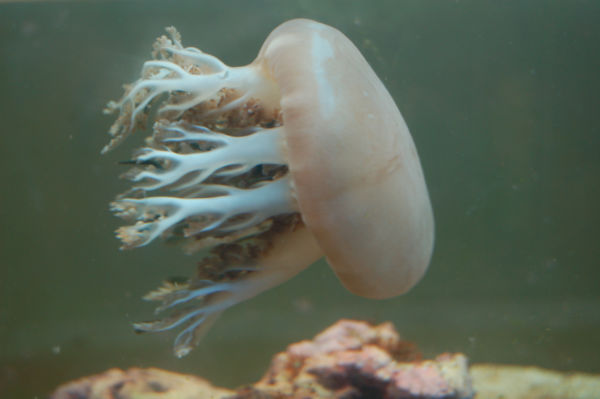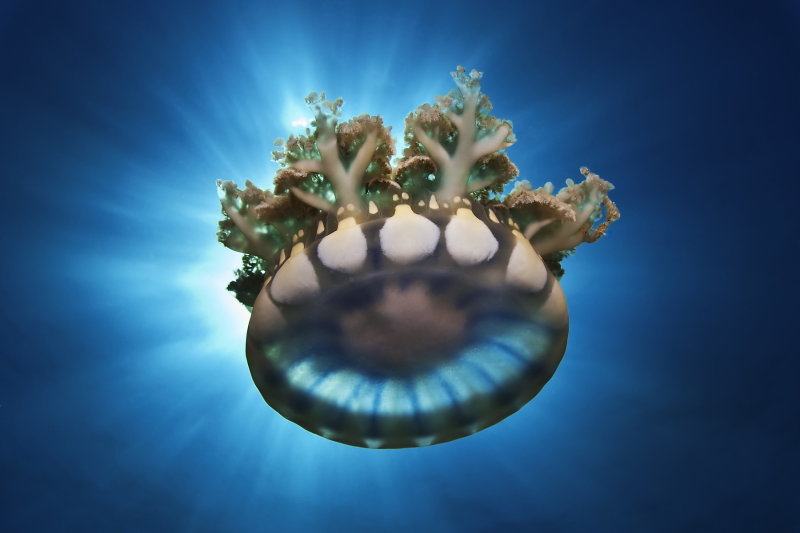

These structures are used in feeding and provide nutrients in combination with what is made available by the photosynthetic dinoflagellates. The medusa, the dominant adult phase of the life cycle, possesses four branching tentacles that extend from the body, up into the water column. This display is the result of numerous densely packed symbiotic zooxanthellae, Symbiodinium microadriaticum. Often it has a somewhat green or gray/blue coloration. The up-side down jellyfish does not have the typical physical characteristics of jellyfish.

It is possible that clumping was also related to the size of the tidal pools. The smaller the individuals, the more likely they were to be found in clumps compared to larger individuals. Diameter appears to have been the single most factors that influenced spacing. If the diameter of the jellyfish correlates with the age, then the population structure of the jellyfish at Gazi Bay is that of a growing population. More individuals were found in clumps than singly more so where the sea grass dominated. Very few individuals occurred in the 12.0-12.9cm class. Most individuals had a mean diameter of 8.0-8.9 cm. Majority of the individuals were feeding. There were predominantly more light brown individuals followed by dark brown with the least number of individuals being grey. The percentage vegetation cover in each pool was estimated and recorded to the nearest whole number. Because jellyfish occurred in tidal pools, the number of individuals in each pool was determined. The colour and number of tentacles on each individual was determined and its activity at the time, recorded. For each individual jellyfish, the diameter was determined using a standard ruler. In each quadrat, all jellyfish encountered were sampled individually. A total of 1043 individual upside-down jellyfish were sampled.

Ten 50mx50m quadrats were randomly placed in an estimated study area of 6.4ha to cover about 40 percent of the total study area. The objective of this study was to quantify the spatial and size-class distribution, and recruitment of Cassiopeia at the Gazi Bay. There are no documented studies on this species in Kenya. In coastal Kenya, they are found only in one specific location in the Gazi Bay of the south coast.

They have a radial symmetry and occur in shallow, tropical lagoons, mangrove swamps and sandy mud falls in tropical and temperate regions. The medusa is the dominant phase in its life history. It is commonly referred to as jellyfish because of its jelly like appearance. Cassiopeia, the upside-down or mangrove jellyfish is a bottom-dwelling, shallow water marine sycophozoan of the phylum Cnidaria.


 0 kommentar(er)
0 kommentar(er)
